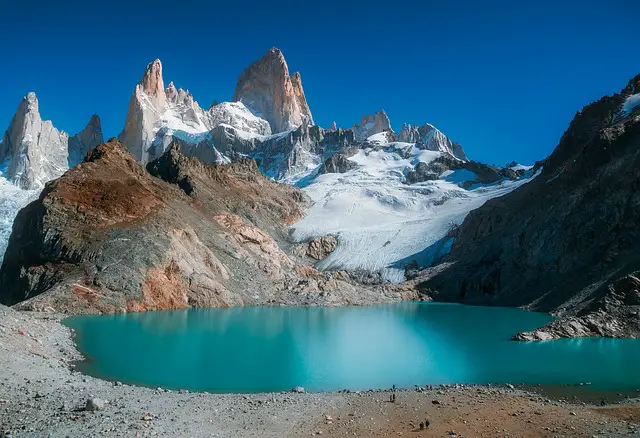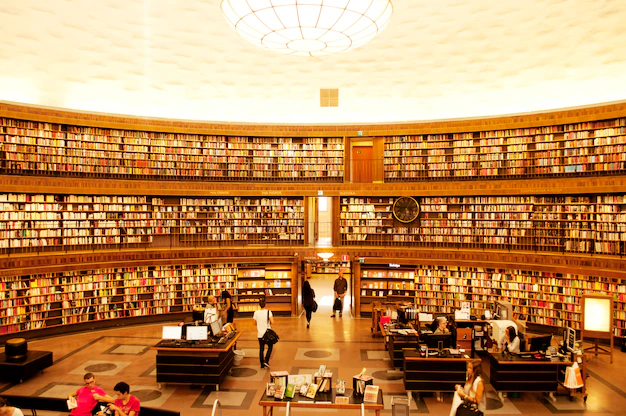Top 12 Must Visit Places and Foods in Argentina

Argentina, the land of tango, gauchos, and breathtaking landscapes, offers a myriad of experiences for travelers. From the bustling streets of Buenos Aires to the serene beauty of Patagonia, this South American gem has something for everyone.

Page Contents
Here are 12 must-visit places in Argentina


- Buenos Aires – The vibrant capital city is a melting pot of culture, art, and history. Explore the colorful neighborhoods of La Boca and San Telmo, indulge in world-class cuisine, and experience the passion of Argentine tango in its birthplace.

Iguazo Falls Runway

2. Iguazú Falls – Nestled on the border of Argentina and Brazil, Iguazú Falls is one of the most awe-inspiring natural wonders in the world. Witness the power and beauty of hundreds of cascading waterfalls set amidst lush rainforest.


3. Perito Moreno Glacier – Located in Los Glaciares National Park in Patagonia, this massive glacier is a sight to behold. Marvel at its towering ice walls and listen to the thunderous roar as chunks of ice calve into Lake Argentino.

4. Bariloche – Situated in the heart of the Andes Mountains, Bariloche is a haven for outdoor enthusiasts. Enjoy skiing in the winter, hiking in the summer, and indulge in the region’s famous chocolate.
5. Mendoza – Argentina’s premier wine region, Mendoza is renowned for its Malbec wines. Take a tour of the vineyards, sample world-class wines, and enjoy stunning views of the Andes.
6. Salta – Immerse yourself in the colonial charm of Salta, known for its beautiful architecture, vibrant markets, and stunning landscapes. Don’t miss the scenic train ride through the Andean foothills on the Tren a las Nubes (Train to the Clouds).
7. Ushuaia – Nicknamed the “End of the World,” Ushuaia is the southernmost city in the world. Explore the rugged beauty of Tierra del Fuego National Park, go hiking or skiing, and embark on expeditions to Antarctica.
8. El Calafate – Gateway to the glaciers of Southern Patagonia, El Calafate is a paradise for nature lovers. Visit the stunning Upsala and Spegazzini Glaciers, go trekking in the surrounding mountains, and enjoy the town’s cozy atmosphere.
9. Córdoba – Rich in history and culture, Córdoba is Argentina’s second-largest city. Explore its colonial architecture, visit Jesuit estancias, and hike in the nearby Sierras de Córdoba.
10. Puerto Madryn – A paradise for wildlife enthusiasts, Puerto Madryn is known for its diverse marine life. Go whale watching, visit penguin colonies at Punta Tombo, and dive with sea lions in the clear waters of the Valdes Peninsula.
11. El Chaltén – Dubbed the “Trekking Capital of Argentina,” El Chaltén is a haven for outdoor adventurers. Hike to the base of Mount Fitz Roy, explore pristine forests, and enjoy stunning views of glaciers and mountains.
12. Rosario – Birthplace of Argentine icon, Che Guevara, and home to the country’s most famous export, Lionel Messi, Rosario is a vibrant city with a rich cultural heritage. Explore its museums, stroll along the scenic waterfront, and indulge in delicious Argentine cuisine.
Top 5 Best Foods in Argentina

- Asado – Argentina is famous for its super delicious grilled meats, and an asado (barbecue) is a quintessential Argentine culinary experience. Enjoy tender cuts of beef, chorizo sausages, and other meats grilled to perfection over an open flame.
- Empanadas – These savory pastries are a staple of Argentine cuisine. Filled with a variety of ingredients such as beef, chicken, ham and cheese, or vegetables, empanadas are the perfect snack or meal on the go.
- Matambre a la Pizza – A unique Argentine dish, matambre a la pizza features thin slices of beef marinated in herbs and spices, topped with tomato sauce, cheese, and often other ingredients like peppers or olives, then grilled to perfection.
- Milanesa – Similar to a breaded cutlet, milanesa is made by coating thin slices of meat, typically beef or chicken, in breadcrumbs and frying them until golden brown. It’s often served with mashed potatoes or salad.

5. Dulce de Leche – A beloved sweet treat in Argentina, dulce de leche is a thick, caramel-like spread made from milk and sugar. Enjoy it spread on toast, drizzled over desserts, or as a filling for fruit, pastries and cakes.
Whether you’re exploring Argentina’s natural wonders, savoring its delicious cuisine, or immersing yourself in its vibrant culture, a visit to this captivating country is sure to leave a lasting impression.
When traveling to Argentina, it’s helpful to know some polite words and phrases to enhance your interactions with locals.
Here are the top 5 polite words/phrases in Argentina for travelers
- Por favor – “Please” – This word is used to make requests politely, whether you’re asking for directions, ordering food, or seeking assistance.
- Gracias – “Thank you” – Expressing gratitude is important in Argentine culture. Use “gracias” to show appreciation for gestures, assistance, or services provided to you.
- Permiso – “Excuse me” or “Pardon me” – Use this word to politely get someone’s attention or to navigate through crowded spaces.
- Disculpe – “Excuse me” or “I’m sorry” – Similar to “permiso,” “disculpe” can be used to apologize or to politely interrupt someone.
- Buenos días/tardes/noches – “Good morning/afternoon/evening” – Greeting people with a polite “buenos días,” “buenas tardes,” or “buenas noches” depending on the time of day is customary in Argentina and helps to establish a friendly rapport.
Argentina, situated in the southern part of South America, is a country renowned for its diverse landscapes, rich culture, and vibrant cities. From the bustling streets of Buenos Aires to the stunning natural wonders of Patagonia and the Andes, Argentina offers travelers a captivating blend of history, gastronomy, and adventure.
History
The history of Argentina is a tapestry woven with indigenous cultures, European colonization, waves of immigration, and political upheavals. Here’s a brief overview:
- Pre-Columbian Era: Before the arrival of European explorers, the region of present-day Argentina was inhabited by indigenous peoples such as the Diaguita, Guarani, and Mapuche. These societies developed complex cultures and lived off the land, engaging in agriculture, hunting, and fishing.
- Colonial Period (16th – 19th Century): In 1516, Spanish explorer Juan Díaz de Solís landed on the shores of present-day Argentina, marking the beginning of European colonization. The Spanish established Buenos Aires in 1536, but conflicts with indigenous peoples and other European powers delayed permanent settlement. It wasn’t until the late 18th century that Argentina began to flourish under Spanish rule, particularly due to trade with other colonies and Europe.
- Independence and Nation-Building (19th Century): Argentina played a significant role in the struggle for independence from Spanish rule in the early 19th century. On May 25, 1810, the May Revolution sparked a series of events leading to Argentina’s declaration of independence on July 9, 1816. However, the newly independent nation faced internal conflicts, including struggles between centralists and federalists, as well as wars against indigenous peoples.
- Immigration and Economic Growth (Late 19th – Early 20th Century): Argentina experienced a massive influx of European immigrants, primarily from Italy and Spain, in the late 19th and early 20th centuries. This wave of immigration contributed to the country’s demographic and cultural diversity and fueled economic growth, particularly in agriculture and industry.
- Political Instability and Military Rule (20th Century): Argentina saw periods of political instability throughout the 20th century, with numerous coups, dictatorships, and periods of democratic rule. The country faced economic challenges, social unrest, and human rights abuses, particularly during the “Dirty War” in the 1970s and early 1980s, when thousands of people were forcibly disappeared by the military junta.
- Modern Argentina: Since the return to democracy in 1983, Argentina has made strides in rebuilding institutions, promoting human rights, and strengthening its economy. While the country still faces socio-economic challenges, it remains a vibrant democracy with a rich cultural heritage and a diverse population.
Today, Argentina is known for its contributions to literature, music, and sports, as well as its thriving tourism industry, which attracts visitors from around the world to explore its natural wonders, experience its vibrant culture, and savor its renowned cuisine.
Using these polite words and phrases will not only show respect for Argentine customs and culture but also help you to communicate more effectively and positively with locals during your travels.







